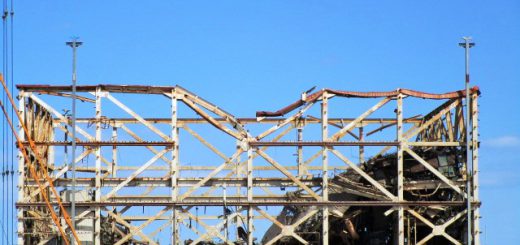From Hiroshima to Rokkasho: The continuing nuclear tragedy must be stopped
〜Report on sessions from the World Congress Against Atomic and Hydrogen Bombs
By Ban Hideyuki (CNIC Co-Director)
The World Congress Against Atomic and Hydrogen Bombs has been held in Hiroshima, marking 77 years since the atomic bombing. The congress was organized by the Japan Congress against A- and H-Bombs, Gensuikin). This organization is one of the leading Japanese organizations that has been working against not only the military use of nuclear weapons but also the commercial use of radioactive material. After the plenary meeting on the first day, the participants split up into several session meetings. The author served as a lecturer at a session meeting named “Nuclear Phaseout II: The Nuclear Fuel Cycle and High-Level Radioactive Waste” along with fellow CNIC Co-Director Nishio Baku, where we gave a report on the current status of nuclear power plants and the nuclear fuel cycle.
Our report focused on the Rokkasho Nuclear Fuel Reprocessing Facility. This facility is designed to separate out plutonium, the material used in the bomb dropped on Nagasaki, from spent nuclear fuel. The government’s plan is that this plutonium will be re-used in other fuels, but, apart from nuclear proliferation dangers, Rokkasho has been plagued with other problems and it is almost certain that its completion will be postponed for the 26th time. The plant has been idle for 14 years since an active test using spent nuclear fuel was conducted there in 2008. The operator is busy implementing additional safety measures based on strengthened regulatory standards introduced in the wake of the Fukushima nuclear accident. This is taking time because there are no engineers who have a sufficient understanding of how and where countermeasures are required. It is believed that this situation has arisen because the design of the plant and non-proliferation-sensitive components have been imported from France. Despite these serious problems, the Japanese government is still fixated on plutonium-using technology.
I also participated in the “Gathering to Condemn Exposure to Radiation,” where a presentation from a second-generation hibakusha (A-bomb victim) drew attention. The speaker, Date Jun’s title was “Hiroshima as Seen by Second-generation Hibakusha,” in which he described the experiences of his parents and relatives as witnessed by the second generation. To summarize his talk, his mother was born in 1929 and was 16 years old at the time of the atomic bombing. At that time, she had been mobilized as a student worker at a munitions factory making poison gas absorption canisters for gas masks in Kohchi District, Saeki Ward, Hiroshima City. Saeki Ward is about 8 km west of ground zero. Mr. Date’s mother saw “the most beautiful light I’ve ever seen,” and then the blast and shock wave hit the factory, shattering windows and plunging it into darkness. She said that documents and other papers from government offices and companies fluttered down out of the sky. She was then exposed to “black rain.” Within two weeks after that, she entered the area within a 2 km radius from ground zero, thus becoming a Class 2 Hibakusha. She also became a Class 3 Hibakusha due to carrying out rescue activities for bomb victims outside of the 2 km radius. She says she has an unfading memory of the feeling of the peeling skin of those directly radiated from the A-bomb that she assisted during the relief activities, and the fact that the maggots kept on crawling out of the victims’ bodies however much she pulled them off. She is now 93 years old and is active in advocating for peace.
Mr. Date’s father, born in 1930, was 15 years old at the time of the bombing. Because of the bombing of Osaka, he had evacuated to Mirasaka (currently in Miyoshi City) where his mother’s family home was located (about 55 km northeast of ground zero). He was on a Geibi Line train going to Kure to be mobilized as a student worker at the time the A-bomb was dropped, entering Hiroshima immediately after, and thus becoming a hibakusha. Mr. Date’s father said he saw a number of victims who died with their heads stuck down in fire cisterns in search of water, and there was blood and fat floating on the surface of the water.
In Mr. Date’s case, his maternal grandfather, grandmother, aunts and uncles became hibakusha. His grandfather had his right leg amputated due to skin cancer ten years after the A-bomb was dropped and also suffered from PTSD (post-traumatic stress disorder) because he had not been able to help a friend who was trapped under a collapsed building. He died at the age of 81. One of Mr. Date’s aunts was near Hiroshima Station when the A-bomb fell and suffered from A-bomb Bura-bura disease (strong fatigue related to radiation exposure). At the age of 23, she committed suicide from cyanide due to prejudice against marriage with hibakusha.
Mr. Date had two older brothers, but the eldest one was born prematurely and the younger one died of sepsis (blood poisoning) before his second birthday.
The experiences and lives of parents related by a second-generation hibakusha poignantly conveyed the state of the military city of Hiroshima and the tragedy of the A-bomb. 77 years have passed since the atomic bombing, and many of the atomic bomb survivors have now passed away. With the question now being how to pass on the reality of the atomic bombing, I felt that this could be done through the narratives of second-generation hibakusha.

